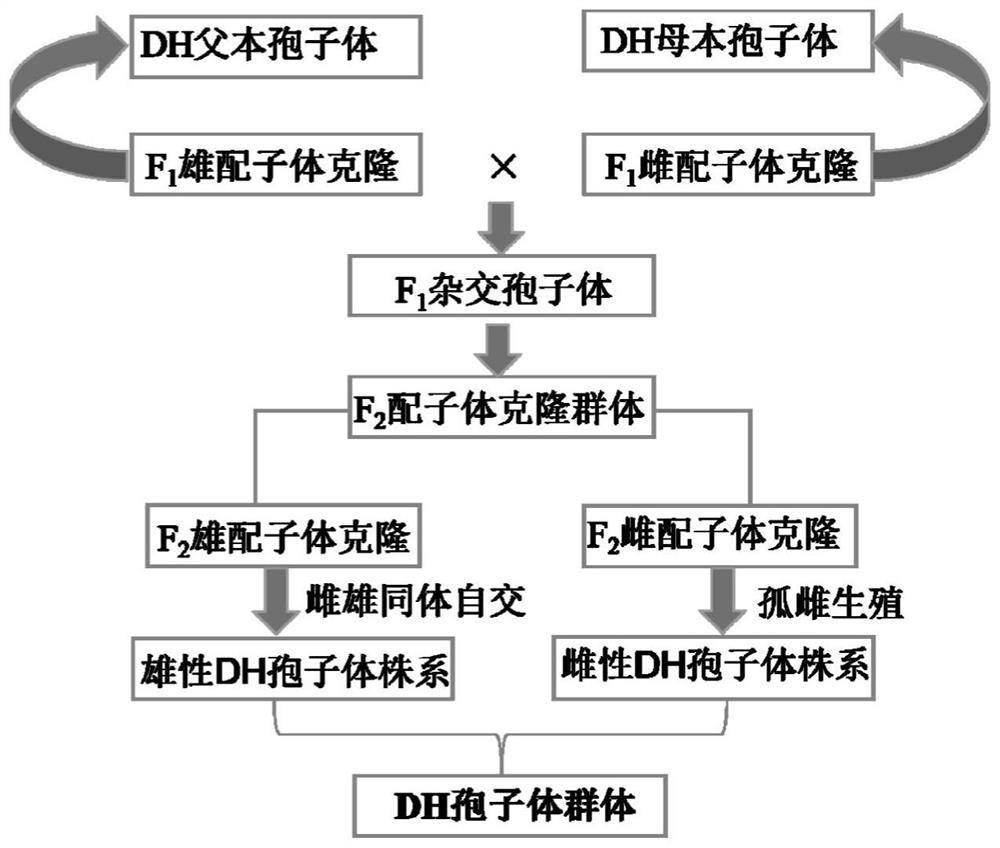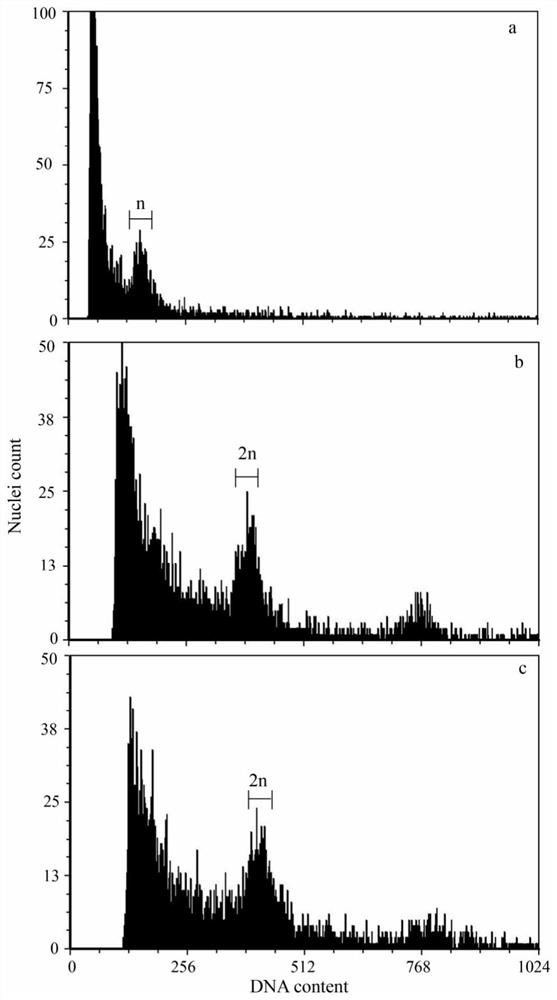Method for constructing double haploid (DH) sporophyte population in undaria pinnatifida
A technology of sporophyte and wakame, applied in the field of genetics and breeding, can solve problems such as no DH population report yet
- Summary
- Abstract
- Description
- Claims
- Application Information
AI Technical Summary
Problems solved by technology
Method used
Image
Examples
Embodiment 1
[0040] Such as figure 1 As shown, select the F with parthenogenetic ability 1 Cloning of female gametophytes and F 1 Male gametophytic clones, genetic relationship analysis of 10 SSR loci of the selected gametophytic clones showed that female and male gametophytic clones had different alleles at 8 loci (80% difference), indicating that the two The genotype differences are obvious, and they are suitable as parents for population construction. Mix the female and male gametophyte clones at a mass ratio of 1:1, and hybridize after mixing to obtain F 1 Hybrid sporophyte; the hybridization process is the mixing of female and male gametophyte clones in PES seawater medium at a temperature of 18°C and a light intensity of 50μmol photons m -2 the s -1 , photoperiod 12h during the day: 12h at night; and under the condition of changing the medium every 3 days, it was cultured statically for 30 days, and the F produced 1 When the sporophytes reach more than 1mm, they are transferre...
PUM
 Login to View More
Login to View More Abstract
Description
Claims
Application Information
 Login to View More
Login to View More - R&D
- Intellectual Property
- Life Sciences
- Materials
- Tech Scout
- Unparalleled Data Quality
- Higher Quality Content
- 60% Fewer Hallucinations
Browse by: Latest US Patents, China's latest patents, Technical Efficacy Thesaurus, Application Domain, Technology Topic, Popular Technical Reports.
© 2025 PatSnap. All rights reserved.Legal|Privacy policy|Modern Slavery Act Transparency Statement|Sitemap|About US| Contact US: help@patsnap.com



